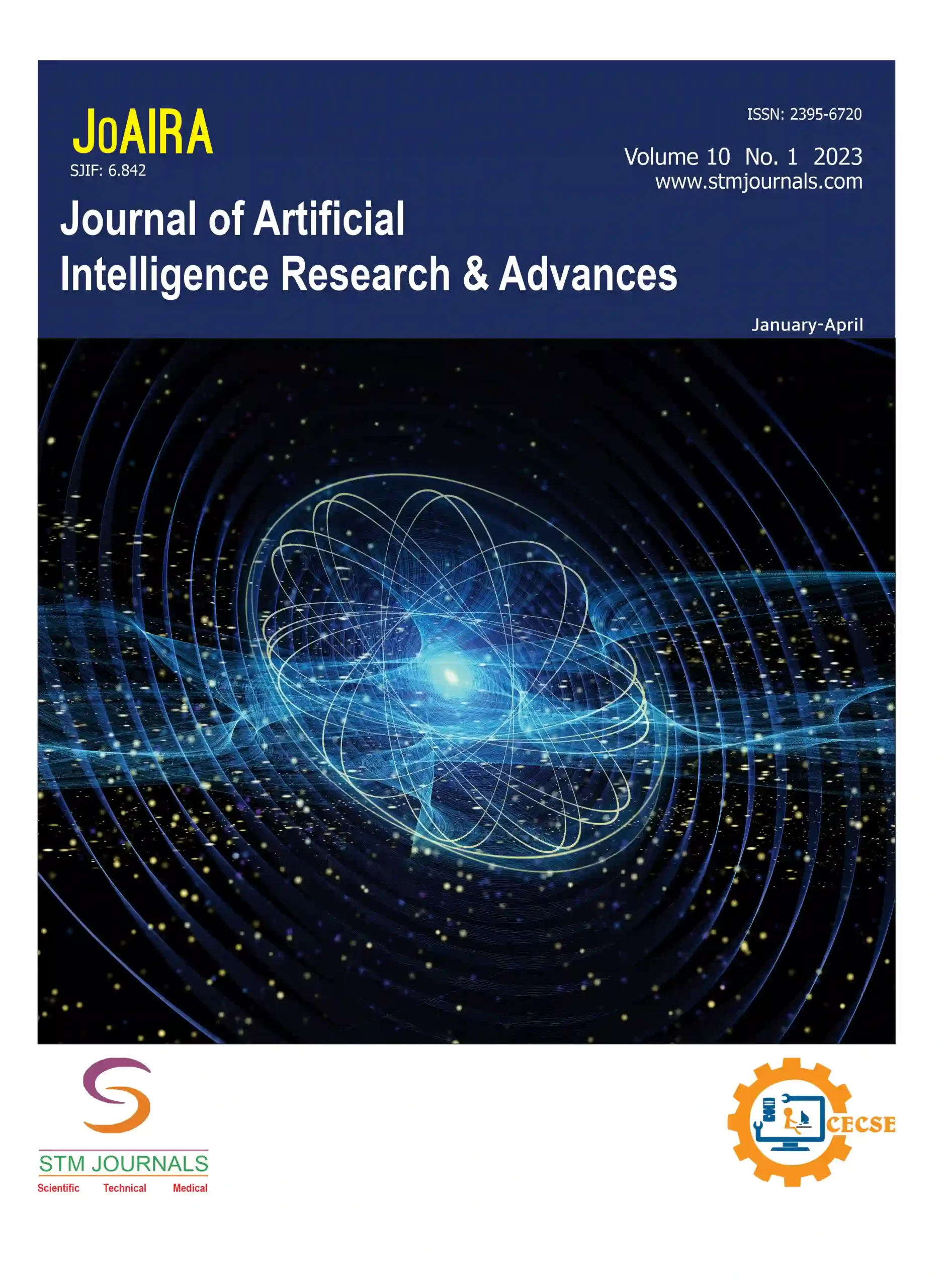
Prashant D. Sawant,
- A.I. Research Director, AI-D Consultancy Melbourne Australia
Abstract
This comprehensive study meticulously investigates the intricacies and challenges inherent in the process of code conversion across a diverse range of programming languages. It provides an in-depth examination of select instances where code conversion poses significant challenges, and thoughtfully proposes innovative solutions to these complex problems. A key highlight of this research is the use of Generative Pre-trained Transformers (GPTs) like Copilot, which have proven to be instrumental in achieving fast, accurate, and effective code conversions. The paper demonstrates how GPTs have solved difficult code conversions with a few intricate examples. The research further delves into the broader implications of these solutions, assessing their impact on the field of programming and software development. Additionally, the paper identifies and discusses potential areas for future research, paving the way for further advancements in this critical aspect of programming. This research serves as a valuable resource for both novice and experienced developers navigating the complexities of code conversion.
Keywords: Generative Pre-trained Transformers (GPTs), code conversion, software development, programming languages, Copilot, artificial intelligence
[This article belongs to Journal of Artificial Intelligence Research & Advances(joaira)]
References
- Prashant Sawant. Artificial Intelligence: The Era of New Industrial Revolution. Kindle Edition. 2022.
- Bristol H, Enno de Boer, Dinu de Kroon, Shahani R, Torti F. Adopting AI at speed and scale: The 4IR push to stay competitive. McKinsey & Company. McKinsey & Company; 2024. Available from: https://www.mckinsey.com/capabilities/operations/our-insights/adopting-ai-at-speed-and-scale-the-4ir-push-to-stay-competitive
- Crafts N. Artificial intelligence as a general-purpose technology: an historical perspective. Oxford Review of Economic Policy. 2021 Sep 1;37(3):521-536.
- Davio Larnout. The Evolution of GPTs: Current State and Future Predictions. Radix.ai. 2023. Available from: https://insights.radix.ai/blog/the-evolution-of-gpts-current-state-and-future-predictions
- Prashant D. Sawant. A Real-Time Visualization Framework to Enhance Prompt Accuracy and Result Outcomes Based on Number of Tokens. Journal of Artificial Intelligence Research & Advances. 2024;11:44-52.
- GPT’s Impact on the Software Development Lifecycle. BCG Platinion. 2023. Available from: https://bcgplatinion.com/insights/gpt-impact-on-sdlc/
- How generative AI can revolutionize the software development lifecycle. KPMG. 2023. Available from: https://kpmg.com/us/en/articles/2023/generative-artificial-intelligence-software-development-lifecycle.html
- McGowan J, Weary R, Carriere L, Game ET, Smith JL, Garvey M, Possingham HP. Prioritizing debt conversion opportunities for marine conservation. Conservation Biology. 2020 Oct;34(5):1065-75.
- Liu C, Xia X, Lo D, Gao C, Yang X, Grundy J. Opportunities and challenges in code search tools. ACM Computing Surveys (CSUR). 2021 Oct 7;54(9):1-40.
- Kim Y, Lee M. A Comparative Study of Educational Programming Languages for Non-majors Students: from the Viewpoint of Programming Language Design Principles. The Journal of Korean association of computer education. 2019;22(1):47-61.
- Borji A. A categorical archive of chatgpt failures. arXiv preprint arXiv:2302.03494. 2023 Feb 6.
- Chinmay Kappor. Harnessing the Power of Large Language Models for Efficient Code Conversion. Medium. 2024. Available from: https://medium.com/@kapoorchinmay231/large-language-models-llms-for-code-conversion-new-age-of-ai-72ebd2c8918d
- McKay S. Code Language Translator: Translate Code Between Languages | Master Data Skills + AI. Master Data Skills + AI | Insights and Strategies from the Enterprise DNA Blog. 2023. Available from: https://blog.enterprisedna.co/code-language-translator/
- Kajol Aikat. 5 Best tools to convert cross platform codes in 2021. TechGig. TechGig; 2021. Available from: https://content.techgig.com/technology/5-best-tools-to-convert-cross-platform-codes-in-2021/articleshow/86257816.cms
- Luke Shannon. Modernization: Developing your code migration strategy. Redhat.com. 2024. Available from: https://www.redhat.com/en/blog/modernization-developing-your-code-migration-strategy
- Walsh D. Best Practices for a Successful Code Migration Mobilize.net. GAP; 2024. Available from: https://www.mobilize.net/blog/best-practices-for-a-successful-code-migration
- Zhang Z, Zhang L, Yuan X, Zhang A, Xu M, Qian F. A First Look at GPT Apps: Landscape and Vulnerability. arXiv preprint arXiv:2402.15105. 2024 Feb 23.
- Zheng Y. ChatGPT for teaching and learning: An experience from data science education. InProceedings of the 24th Annual Conference on Information Technology Education 2023 Oct 11 (pp. 66-72).
- Data Structures 5. Python documentation. 2024. Available from: https://docs.python.org/3/tutorial/datastructures.html
- prototype.map() – JavaScript | MDN. MDN Web Docs. 2023. Available from: https://developer.mozilla.org/en-US/docs/Web/JavaScript/Reference/Global_Objects/Array/map
- Stroustrup, The C++ Programming Language (4th ed.). Addison-Wesley Professional. (2013).
- Gosling, B. Joy, G Steele., G. Bracha, and A. Buckley , The Java Language Specification, Java SE 8 Edition. Addison-Wesley Professional. (2014).
- McKinney, (2010). Data Structures for Statistical Computing in Python. Proceedings of the 9th Python in Science Conference, 51-56.
- Paul N, Evans D. Comparing Java and. NET security: Lessons learned and missed. computers & security. 2006 Jul 1;25(5):338-50.
- Luecke KR, Ellis BJ, Baxter I, Akers RL, Mehlich M. Software code base conversions. In2007 IEEE/AIAA 26th Digital Avionics Systems Conference 2007 Oct 21 (pp. 6-C). IEEE.
- Flanagan, D. (2006). JavaScript: The Definitive Guide. O’Reilly Media.
- McKinney W. Data structures for statistical computing in Python. InSciPy 2010 Jun 28 (Vol. 445, No. 1, pp. 51-56).
- Arnold, K., Gosling, J., & Holmes, D. (2005). The Java Programming Language (4th ed.). Addison-Wesley Professional.

Journal of Artificial Intelligence Research & Advances
| Volume | 11 |
| Issue | 02 |
| Received | April 23, 2024 |
| Accepted | May 30, 2024 |
| Published | June 20, 2024 |

